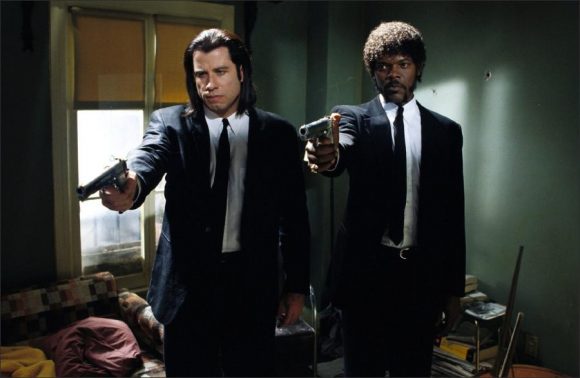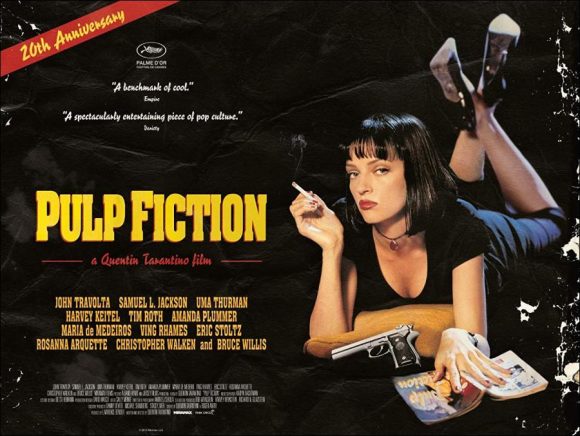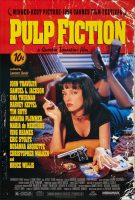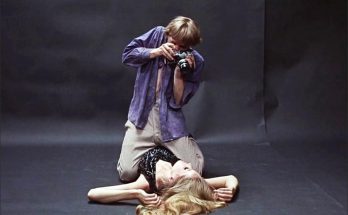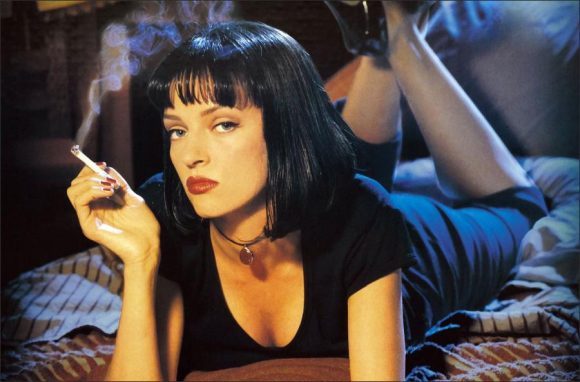
When it comes to postmodern narrative in cinema, the first thing that comes to mind is Quentin Tarantino’s 1994 Pulp Fiction, which he co-wrote with Roger Avary. The cult, with his story, acting and music, won the Palme d’Or, the grand prize in Cannes, and was nominated for seven Academy Awards.
After embracing the Best Screenplay award from the categories to which he was nominated, he carries his name to the present day. Nowadays Pulp Fiction is accepted as a “masterpiece”. The film features star names such as John Travolta, Samuel L. Jackson, Uma Thurman, Bruce Willis and the number one in the “Top 250 Film” list with the votes of the leading movie website IMDb 7.
Ringo (Tim Roth) and Yolanda (Amanda Plummer) are small-scale robbers in love. They pursue a different plan to add little excitement to their lives. Vincent Vega (John Travolta) and Jules Winnfield (Samuel L. Jackson) are two shooters working for Marsellus Wallace (Ving Rhames).
While out of town, Marsellus asks his shooter Vincent to take his wife Mia Wallace (Uma Thurman) out and entertain him one night. Marsellus, who is also the boss of the dark world, asks boxer Butch Coolidge (Bruce Willis) to fix. Butch cannot accept defeat during the match and starts to run away. The film deals with these seven characters.
So why does Postmodern narrative come to mind first in Pulp Fiction? Perhaps the most important feature of postmodern art is that the sense of fragmentation always exists. The fact that form and content are always incompatible is what makes postmodern post-modern. Tarantino also deals with the incompatibility of form and content in Pulp Fiction and presents the film in a fragmented fiction.
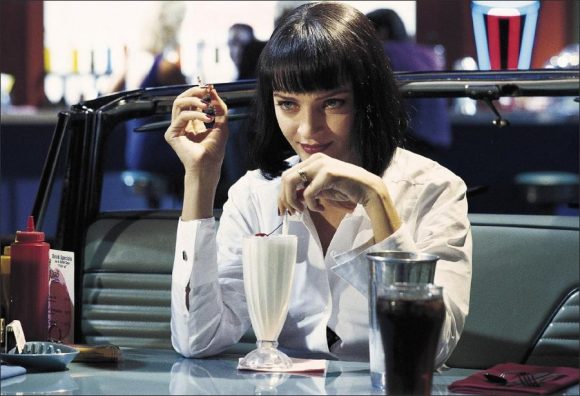
It removes the boundaries between past and present by destroying the concepts of time and space through piece fiction. These limits are not only eliminated by piece fiction. It also removes the boundaries between the past and the present due to the fact that the film carries the spirit of the sixties even though the film passed in the nineties, the sense of nostalgia that was present at the dinner of the characters of Vincent and Mia, and the absence of any explanation to the audience about time and place.
The film does not belong to a certain period. The director brings a critical approach to the perception of lik reality ile with his piece of fiction. The perception of integrity in modern narrative brings reality. The postmodern narrative, on the other hand, leaves the whole set aside and deals with the part, which causes the perception of reality to disappear completely. Tarantino is as good an example as Pulp Fiction and David Lynch, who is regarded as the master of postmodern narrative.
It would not be wrong to say that Pulp Fiction is an example of neo-noir as successful as the postmodern narrative. It presents a good example of neo-noir with its subject, content and media criticism. Tarantino can’t stop using certain patterns of noir films. The concepts such as violence, gangster, femme fatale, which are always present in Noir cinema, are also seen in this film.
Let’s look at these one by one. First of all, with his references to giant brands such as Pepsi, Burger King and McDonalds, it is his criticism that Tarantino has directed to the media. In this context, the reference to Saturday Night Fever, the use of Marilyn Monroe character can be read as media criticism. The ‘film noir başlayan that began in the late 1940s can simply be described as“ crime films film.
The fact that Pulp Fiction is also a crime film in terms of its subject matter shows that it is a ‘noir başına in itself. One of the sine qua non of Noir films is the me femme fatale ’character. Mia Wallace, played by Uma Thurman, appears as a femme fatale in the film. Mia Wallace draws a complete femme fatale picture, as Vincent Vega desires Mia, but is afraid of what will happen to her, and makes her name again in a society where men reign. In 1994, Tarantino presented the audience with a successful ‘noir’.
The success of Pulp Fiction comes to the present by presenting ‘Post-Modern’ and ‘Neo-Noir ine examples to the history of cinema and transferring concepts and codes towards film. Adding to this story, music and acting, it is no surprise that the film is declared a cult.
Pulp Fiction (1994)
Directed by: Quentin Tarantino
Starring: John Travolta, Samuel L. Jackson, Uma Thurman, Harvey Keitel, Tim Roth, Amanda Plummer, Maria de Medeiros, Ving Rhames, Eric Stoltz, Rosanna Arquette, Christopher Walken, Bruce Willis
Screenplay by: Quentin Tarantino
Production Design by: David Wasco
Cinematography by: Andrzej Sekula
Film Editing by: Sally Menke
Costume Design by: Betsy Heimann
Set Decoration by: Sandy Reynolds-Wasco
Art Direction by: Charles Collum
MPAA Rating: R for strong graphic violence and drug use, pervasive strong language and some sexuality.
Distributed by: Miramax Films
Release Date: May 12, 1994 (Cannes), October 14, 1994 (United States)
Visits: 245
